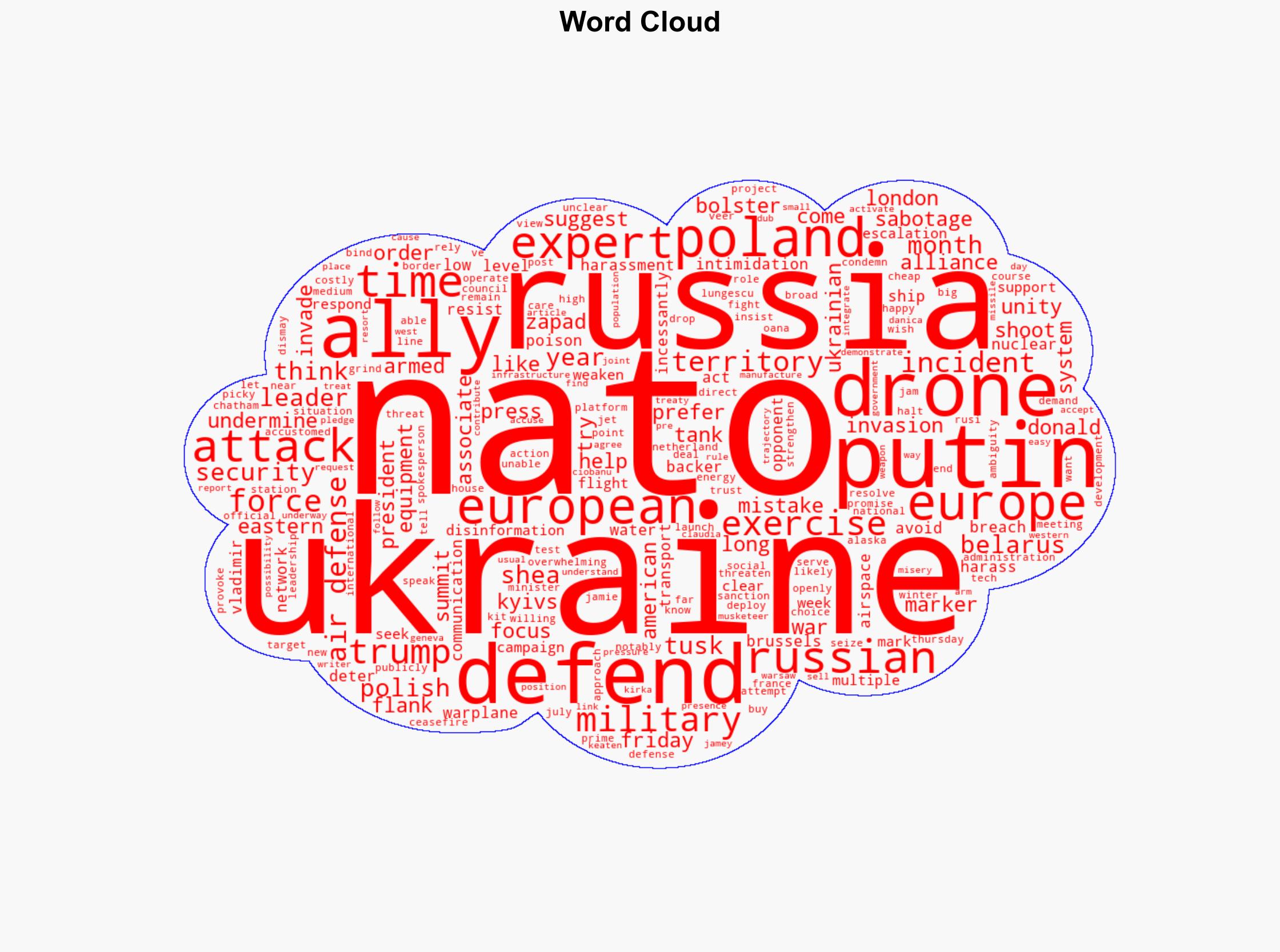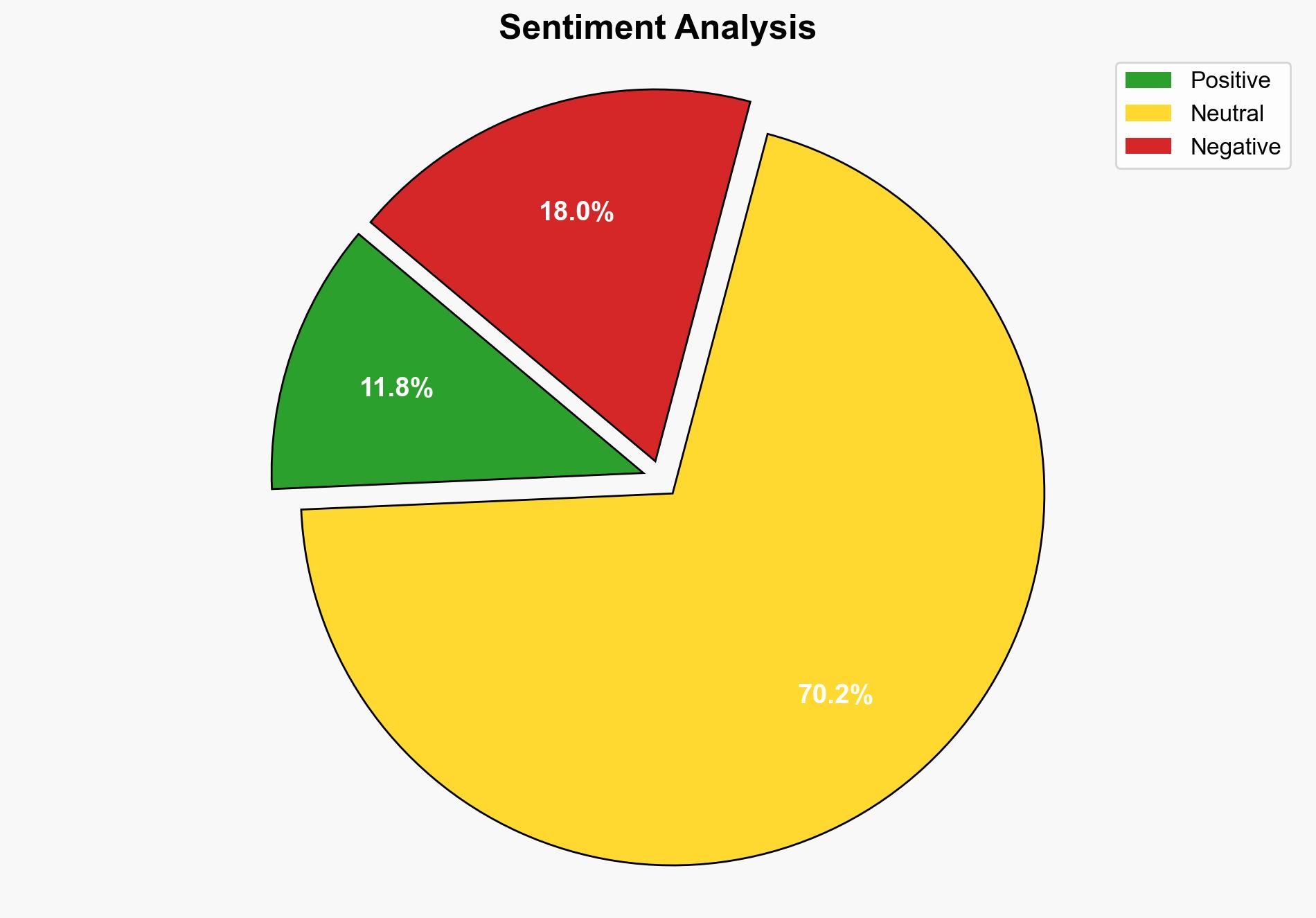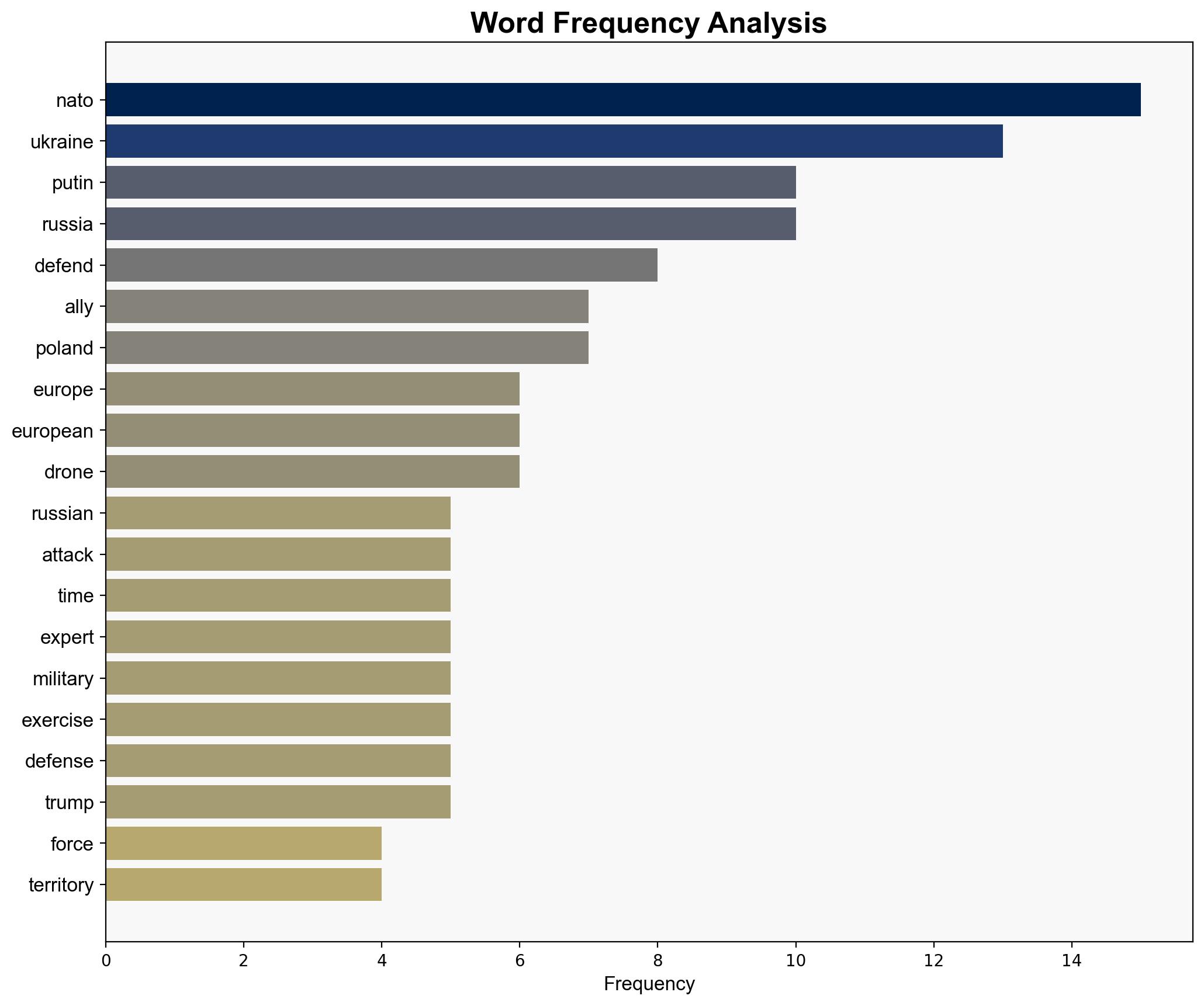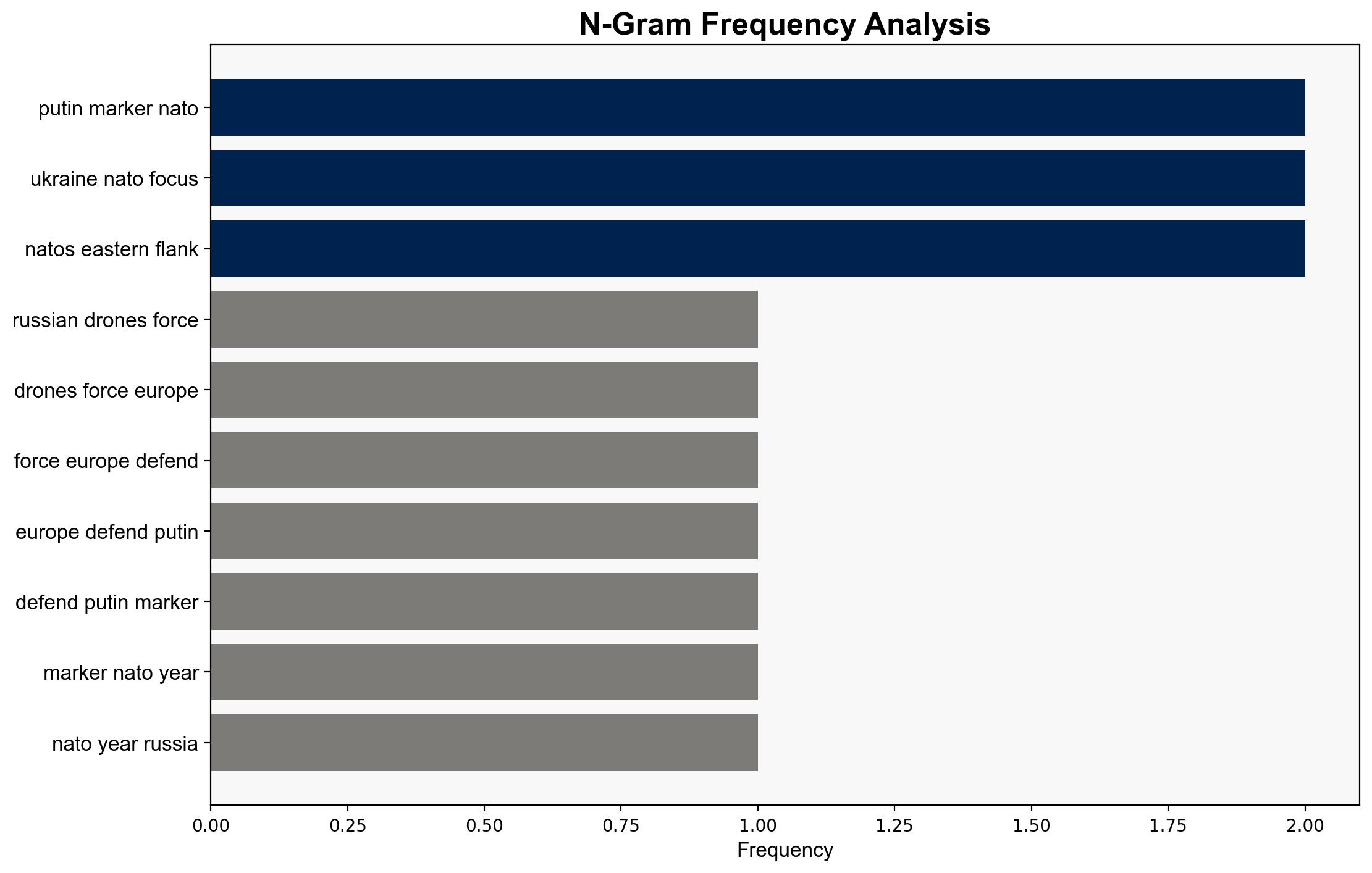Russian drones force Europe to defend itself perhaps alone as Putin ‘put down a marker’ to NATO – ABC News
Published on: 2025-09-12
Intelligence Report: Russian drones force Europe to defend itself perhaps alone as Putin ‘put down a marker’ to NATO – ABC News
1. BLUF (Bottom Line Up Front)
The most supported hypothesis is that Russia is deliberately testing NATO’s resolve and unity by using drones to provoke European nations, particularly Poland. The confidence level in this assessment is moderate due to the complexity of geopolitical dynamics and the potential for misinterpretation of intentions. It is recommended that NATO enhance its integrated air defense systems and increase diplomatic efforts to maintain alliance cohesion.
2. Competing Hypotheses
1. **Hypothesis 1**: Russia is intentionally using drones to test NATO’s response capabilities and unity. This hypothesis suggests that the drone incidents are a strategic move by Russia to gauge NATO’s defensive readiness and to create divisions within the alliance by forcing European nations to respond independently.
2. **Hypothesis 2**: The drone incidents are accidental, resulting from technical malfunctions or miscommunications during military exercises. This hypothesis posits that the drones veering off course was not a deliberate act by Russia but rather an unintended consequence of military operations.
Using ACH 2.0, Hypothesis 1 is better supported by the pattern of Russian provocations and the strategic context of ongoing tensions between NATO and Russia.
3. Key Assumptions and Red Flags
– **Assumptions**: It is assumed that Russia has the capability and intent to use drones as a tool for strategic provocation. Additionally, it is assumed that NATO’s response will be cohesive and effective.
– **Red Flags**: The possibility of misinterpretation of drone incidents as deliberate acts when they might be accidental. The lack of direct evidence linking these specific drone incidents to a broader Russian strategy.
– **Blind Spots**: Potential underestimation of Russia’s willingness to escalate tensions further and the internal political dynamics within NATO member states that could affect their response.
4. Implications and Strategic Risks
– **Escalation Risks**: Continued drone incidents could lead to increased military tensions and potential miscalculations, resulting in unintended conflict escalation.
– **Geopolitical Impact**: Strain on NATO unity and increased pressure on European nations to enhance their defense capabilities independently.
– **Economic and Cyber Threats**: Potential for Russia to complement physical provocations with cyber operations targeting critical infrastructure.
– **Psychological Impact**: Erosion of public confidence in NATO’s ability to protect member states, leading to increased political pressure on governments.
5. Recommendations and Outlook
- Enhance NATO’s integrated air defense systems and increase joint military exercises to improve readiness and cohesion.
- Engage in diplomatic efforts to reaffirm NATO’s commitment to collective defense and deter further provocations.
- Scenario Projections:
- **Best Case**: NATO successfully deters further provocations through diplomatic and military readiness, maintaining alliance unity.
- **Worst Case**: Misinterpretations lead to military conflict, straining NATO’s resources and political cohesion.
- **Most Likely**: Continued low-level provocations with NATO responding through increased defense measures and diplomatic channels.
6. Key Individuals and Entities
– Vladimir Putin
– Donald Tusk
– Oana Lungescu
– Jamie Shea
7. Thematic Tags
national security threats, cybersecurity, counter-terrorism, regional focus





